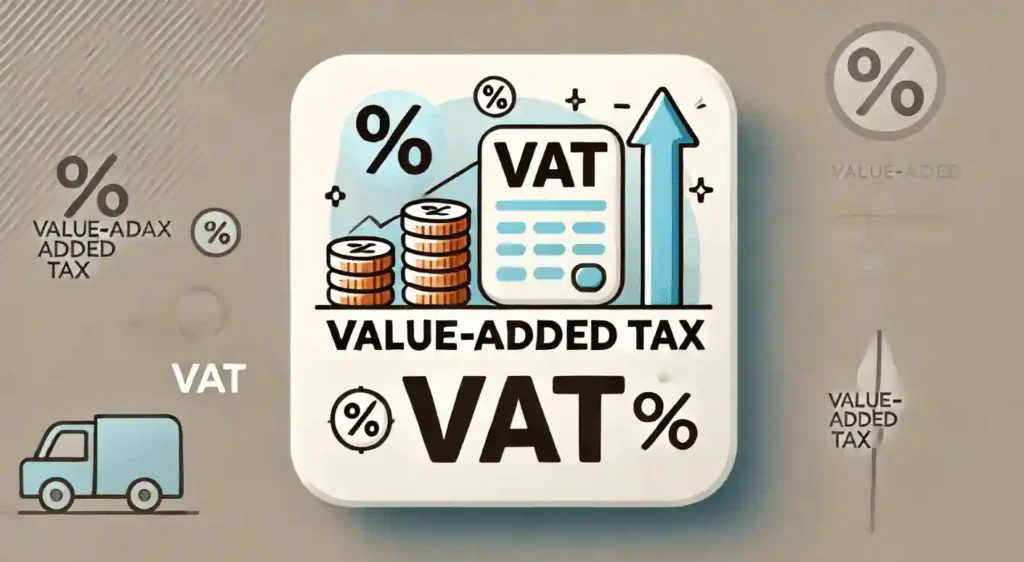
VAT, a type of indirect tax, applies to the sale of virtually all goods and services. Authorities levy it at each stage of production or distribution as value is added to the goods. In several nations, including India, GST has already replaced VAT for good measure; however, the conception and application of VAT are alive and kicking.
VAT, or Value-Added Tax, is an indirect tax that progresses with each stage. The premise of this tax is to encourage business transparency and eliminate the problem of taxing the same person or entity more than once.
Corporations can receive reimbursements for the input value-added tax, which benefits them.
What are the major functions of VAT?
The value-added tax worldwide primarily intends to collect tax, attracting tax at every value-addition point. The process works as follows:
1. Manufacturer: VAT applies to purchasing raw materials and is also charged on the finished product sold to the wholesaler.
2. Wholesaler: The wholesaler buys the commodity and charges a higher price for it by selling it to the retailer. Again, tax VAT is applicable in this case.
3. Retailer: The retailer usually charges the customer the price of the goods and collects VAT from the customer.
So, summing up VAT, it comes back to the end consumer. This tax is also indirect, and it is clear that every business has to pay the government at every stage.
Also Read:- Tax Concepts
Key factors
1. Revisions of Input Tax Claims: This process and its benefits exist in companies. Companies that pay VAT to procure raw materials or services can file reimbursement claims.
2. Ease: The procedure for value-added tax is very simple, so there is no risk of double taxation (outward and inward) being applied.
In 2017, India enacted the Goods and Services Tax (GST), effectively replacing the previously state-administered Value Added Tax (VAT). The GST system is more beneficial because it applies at the same rate nationwide. However, the regional VAT tax is still in place in several sectors and for many commodities.
Classification of VAT Tax
• VAT Tax (Central VAT): The central government imposes VAT on most business activities in affected industries.
• State VAT Tax: State governments can impose their VATs. VAT tax is an important source of income for the states.
What are the different types of prevalent VAT?
There are numerous categories of VAT based on the types of industries and goods involved. In most instances, the VAT values are 5% cents, and in some cases, 12% or 18%, while in some instances, it is even 28%. These rates are common to a good number of goods and services.
Value Added Tax (VAT) For Business – Its implementation and Its pros
From a business perspective, VAT is beneficial for this type of tax, especially its consistency and ease of calculation. In the VAT tax regime, traders can pay taxes at a constant rate without difficulty.
Additionally, taxpayers do not have to pay any other tax due to the “Input Tax Credit” provision.
Processes Relevant to Enterprises
• Establishment of a Business: A company must undergo VAT registration before VAT collection.
• Filing VAT Returns: Every enterprise must file regular VAT returns detailing their sales and purchases.
Key issues about VAT Tax
• Legal Tax Rates: The rates of VAT tax are rather different in different countries, which may create confusion and delays in the calculations.
• Payment of Tax Credit: Sometimes, the procedure for Input Tax Credit takes a long time, and therefore, traders are not able to receive relief.
From the Consumer’s Perspective
In the context of market judgement, it seems that worth is most readily and straightforwardly measured by price. An economy is everything everyone says they can produce or put on a finishing layer of any good in selling activities.
Despite this, it has its advantages for purchasers, for this kind of tax is usually incurred whenever purchases of goods or services are made instead.
Features of VAT Tax
Tax at the sale and purchase stage – ‘payment’ only occurs at the purchase – final.
VAT is imposed on all the steps, from treating raw materials to comprehending the finished good. As a result, tax is charged on every increase.
Input tax credit:- Traders who incur VAT purchasing raw materials or services are not prejudiced since they owe a double taxation rate. They can recover this amount.
Searching for tax:- There is no ambiguity regarding tax levy for traders and consumers since the VAT-inclusive plyboard price will be standard for such a commodity.
The last cost for the client:- The entire value-added tax burden falls on the ultimate consumer.
Usage across the globe:- Various nations implement VAT, which stands out as a leading component of the banking system.
Conclusion
Moreover, while paying value-added tax (VAT), consumers derive a certain value for business activities in the market economy. The entrenchment of the VAT system, for example, slows down the growth of business operational improvements. VAT is a common phenomenon in many countries, and it has also largely replaced the previous tax systems with the GST tax system.
FAQ’s
Most businesses must register for VAT purposes and charge and pay tax at the prescribed by-law thresholds.
In e-commerce, taxes apply to every transaction. Sellers who sell goods online must charge VAT or Value Added Tax on their sales, which is a must report.
VAT taxation spans various territories in the country, although it has a worldwide application since many nations practice it.
Pingback: What is GST? Everything You Need to Know About the GST